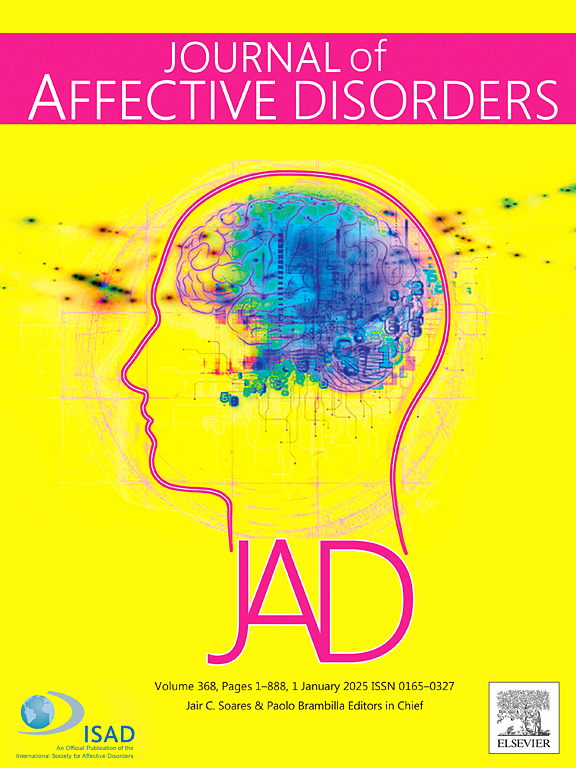Accelerometer-derived “weekend warrior” physical activity, genetic susceptibility, and risk of depression and anxiety: The UK Biobank study
IF 4.9
2区 医学
Q1 CLINICAL NEUROLOGY
引用次数: 0
Abstract
Importance
Guidelines recommend 150 min per week (min/wk) or more of moderate to vigorous physical activity (MVPA) for mental health benefits. However, the relative effects of concentrated against more evenly distributed activity patterns remain unclear.
Objective
We aimed to examine associations of the accelerometer-derived “weekend warrior (WW)” pattern (MVPA concentrated within 1 to 2 days) vs MVPA spread more evenly with risk of depression and anxiety.
Design, setting, and participants
This prospective cohort study included 84,570 participants with accelerometer data identified from the UK Biobank.
Exposures
Three MVPA patterns were compared: active WW (MVPA ≥150 min/wk and ≥50 % of total MVPA within 1 to 2 days), active regular (MVPA ≥150 min/wk but not active WW), and inactive (MVPA <150 min/wk).
Main outcomes and measures
Cox regression was used to assess the association of MVPA patterns with depression and anxiety, and whether the association differed by different levels of sedentary time (≤6, 7–12, ≥13 h/day) and light physical activity (≤60, 61–150, ≥151 min/day). We also evaluated the combined impact of MVPA patterns and genetic susceptibility on depression and anxiety.
Results
During the follow-up of up to 9.40 years, 2098 and 2699 cases of depression and anxiety were identified, respectively. Compared with inactive group, active regular and active WW groups exhibited similarly reduced risks of depression (active regular: HR, 0.74 [95 % CI, 0.66–0.84]; active WW: 0.72 [0.65–0.80]) and anxiety (active regular: 0.77 [0.69–0.86]; active WW: 0.72 [0.66–0.79]). The impact of active regular and active WW groups on depression and anxiety was more pronounced among individuals with excessive sedentary time (≥13 h/day) and insufficient light physical activity (≤60 min/day). Individuals with low genetic risk and active regular (depression: 0.64 [0.48–0.87]; anxiety: 0.62 [0.49–0.79]), as well as low genetic risk and active WW groups (depression: 0.60 [0.47–0.77]; anxiety: 0.59 [0.48–0.72]) exhibited the lowest risks of depression and anxiety compared to those with high genetic risk and inactive group.
Conclusions and relevance
Adherence to active physical activity, regardless of physical activity concentrated within 1 to 2 days or more evenly distributed, may help reduce depression and anxiety risks across a population with different genetic risk profiles.
求助全文
约1分钟内获得全文
求助全文
来源期刊

Journal of affective disorders
医学-精神病学
CiteScore
10.90
自引率
6.10%
发文量
1319
审稿时长
9.3 weeks
期刊介绍:
The Journal of Affective Disorders publishes papers concerned with affective disorders in the widest sense: depression, mania, mood spectrum, emotions and personality, anxiety and stress. It is interdisciplinary and aims to bring together different approaches for a diverse readership. Top quality papers will be accepted dealing with any aspect of affective disorders, including neuroimaging, cognitive neurosciences, genetics, molecular biology, experimental and clinical neurosciences, pharmacology, neuroimmunoendocrinology, intervention and treatment trials.
 求助内容:
求助内容: 应助结果提醒方式:
应助结果提醒方式:


